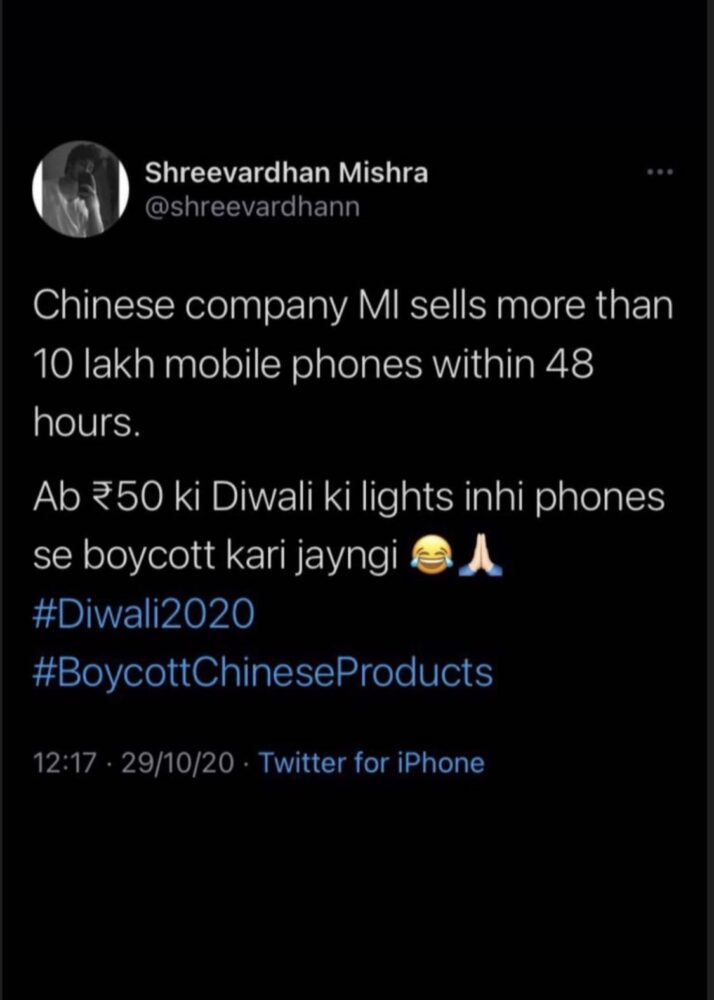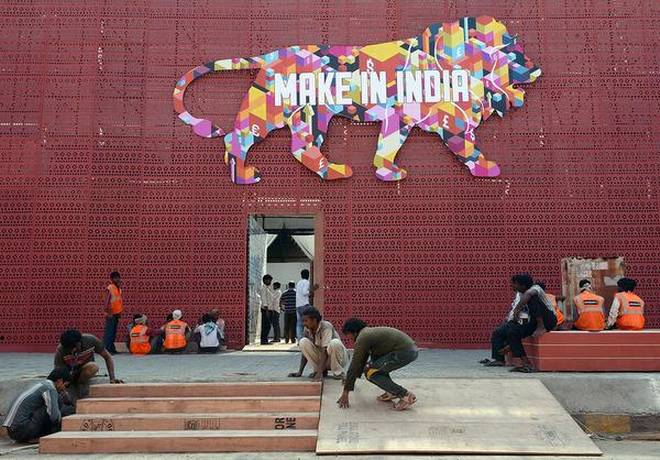The festive season has begun and there are major discounts and super-sales snowballing across sectors related to gadgets, clothing, traveling, accessories, and what not! The interesting part is that just a few months ago i.e, till mid-June to August, Indians were up for ‘Boycotting Chinese products’ and securing a call for ‘Made in India’ products.
Even India’s nationalistic government pleaded for the consumption of made in India products. But here is a reality check. The third-quarter figures released by market research firm Canalys hint that the call for a boycott had no impact on the sales of Chinese smartphones.

As per the data available, the sale of smartphones was up by 8% in July to September period associated with the same period a year ago. According to the Canalys report, Xiaomi continued to dominate the Indian market and for the readers, it must be noted that Xiaomi is a Chinese brand, and collectively Chinese vendors comprised 76% of the total smartphone purchases in the July to September quarter. Vivo made the third position with 8.8 million mobile sales. As the reports suggest anti-China sentiment did not impact sales of the Chinese brand.

Pseudo-nationalists may feel hurt but that’s what the figure shows, the Chinese smartphones clock high sales despite the ‘Boycott China’ sentiment. Boycott China was itself bizarre because even if you consider non-Chinese India-made smartphones, most of the components are still being imported from China.
Read: Is Boycott Only On The Air? Because The Ground Reality Is Different
Reason for Boycott
The trigger ‘Boycott China’ started after a face-off in the Galwan Valley in eastern Ladakh which led to the martyrdom of 20 Indian soldiers. As a result, the call to boycott Chinese goods amplified. There was a huge protest in Delhi regarding the same and a national campaign was launched under the banner of ‘Bhartiya Saman Hamara Abhimaan.’
It was ignited in India targeting Chinese products with many breaking their ‘made-in-China’ mobile phones and TV sets. This kind of cavalcade was led by Vishwa Hindu Parishad and Bajrang Dal in various cities such as Aligarh, Ghatkopar, and Noida. These are the same people who were prattling to clanging thalis to drive away the Coronavirus.

It is for the future to predict, what’s in store for the people when two of the largest nuclear powers have warned each other with their nuclear weapons. The sheer irrationality of boycotting made in China products is hardly a new thing and ended up being a mere propaganda. While it was much clear way before and as the Business Insider reported that boycott could end up with India falling to be the sufferer because it will discourage Chinese business in India and the telecom industry.
The Business Line also said that it may lead to an increment of acquirement cost by around 20%. When the sales are strengthening in numbers the Boycott China looks like the propaganda of the Narendra Modi-led government and has raised serious questions when the Prime Minister used this tactic to woo Bihar voters during the 2020 state assembly election.
It is beyond the grades of a Prime Minister to use the martyrdom of our soldiers and the ongoing clash between Indian and Chinese troops as an election agenda. Boycotting Chinese product also looks like an absurd decision as banning apps like TikTok lead to loss of jobs.
The way out: Move beyond slogans
The very own Indian start-ups are being funded by China indirectly or directly like Paytm, OYO, Zomato, Swiggy, Ola. And the questions also are being asked because if the government was so serious about all this then why it’s not working on its policies like increasing ‘Free Trade Agreements’ with another country so that it can restrict imports from China.
It can reduce tariffs of products coming from other countries by making it feasible for them to import from India. The seriousness of the government can be understood by the fact that the ‘Free Trade Agreement’ with the European Union has been stuck for over 10 years now and with Australia, it’s been 8 years. Even during the USA-China trade war, the US did not prefer India as a trade partner but considered Vietnam.
Failure of the Indian government can be understood by this indispensable fact only that the economic condition of India was not up to the mark for the US to invest. One also needs to keep in mind that ‘Make in India’ and ‘Made in India’ slogans will not prove to be of much help untill there is proper governmental support for start-ups.

Make in India was a fiasco because there was no investment neither in the manufacturing sector nor in the telecom sector. Also, according to a survey, for the Ease of Doing Business India ranks 63rd where China is on 31st. Chinese investors came in between and there is a huge investment in Indian companies. There is Chinese dependency even in Indian start-ups.
Last but not least, it is foreign relations with the neighboring countries which have deteriorated over the years because of an amendment act like the controversial CAA with Nepal, Sri Lanka, Bangladesh, and Pakistan. It has to improve on that aspect also so that the trade could be done with these countries and the situation of India can be improved.
At the end of the day, it is hard to ‘out-China’ China. Instead, India needs to focus on its niches, its domestic needs, and gaps that other global players might not be filling.
Boycotting Chinese lights this Diwali will be good only for self-pride, but it will achieve only emblematic show off with India’s common annoyance. With poor policies and the government’s intentions, the country’s army stands alone in its commitment to push back China.
The GOI needs to understand that beating the enemy is not just about sending the army to battle and taking their due credit but providing them with adequate dynamism. The real battle against the Chinese is about generating the capability to assert unsullied plans than wooing voters in exchange for the valor of the army.
Read: China Aggressively Gaining Stake In The Global Pharma Market. Where Does It Leave India?
For more such articles explore our Opinion Section
















